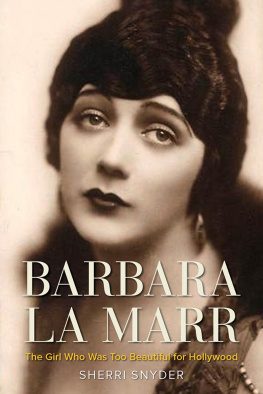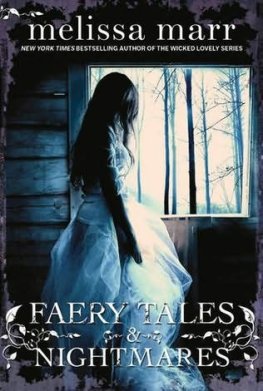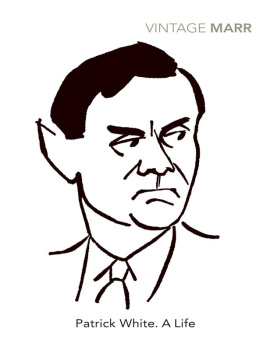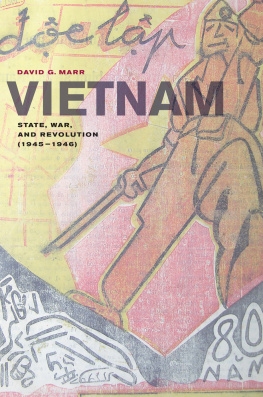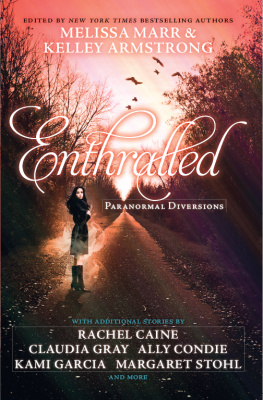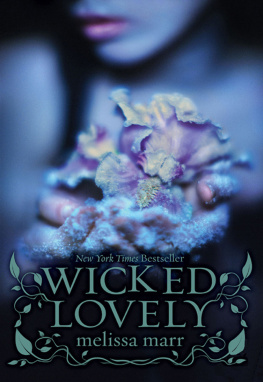BARBARA LA MARR
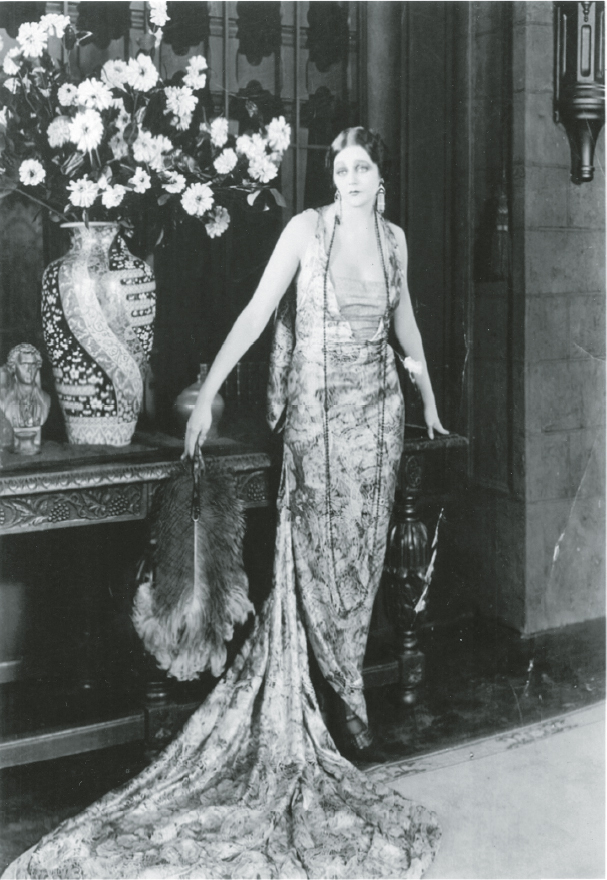
Barbara as she appeared in an advertisement for Richelieu pearls, 1924.
Unless otherwise noted, all photographs are from the authors collection.
BARBARA LA MARR
The Girl Who Was Too Beautiful for Hollywood
SHERRI SNYDER

Due to variations in the technical specifications of different electronic reading devices, some elements of this ebook may not appear as they do in the print edition. Readers are encouraged to experiment with user settings for optimum results.
Copyright 2017 by Sherri Snyder
Published by the University Press of Kentucky, scholarly publisher for the Commonwealth, serving Bellarmine University, Berea College, Centre College of Kentucky, Eastern Kentucky University, The Filson Historical Society, Georgetown College, Kentucky Historical Society, Kentucky State University, Morehead State University, Murray State University, Northern Kentucky University, Transylvania University, University of Kentucky, University of Louisville, and Western Kentucky University.
All rights reserved.
Editorial and Sales Offices: The University Press of Kentucky
663 South Limestone Street, Lexington, Kentucky 405084008
www.kentuckypress.com
Cataloging-in-Publication data is available from the Library of Congress.
ISBN 978-0-8131-7425-9 (hardcover : alk. paper)
ISBN 978-0-8131-7427-3 (epub)
ISBN 978-0-8131-7426-6 (pdf)
This book is printed on acid-free paper meeting the requirements of the American National Standard for Permanence in Paper for Printed Library Materials.

Manufactured in the United States of America.

| Member of the Association of
American University Presses |
For Barbara and Don, with all my heart.
Sherri has brought my mother back to life for me. She has generously given of her time and energy to fulfill my lifelong need to tell the true life story of Barbara La Marr, a woman who was decades ahead of her time. I can never thank her enough.
Donald M. Gallery, 2014
Contents
Preface
I first heard the name Barbara La Marr from Karie Bible, a film historian and author with whom I became friends when we both modeled for a vintage-fashions designer. Karie contacted me one morning in July 2007 about an opportunity I couldnt refuse. The Pasadena Playhouse and Pasadena Museum of History were casting Channeling Hollywood, a play involving the life stories of five Hollywood notables. One of the producers had asked her if she knew anyone who could portray silent screen star Barbara La Marra fascinating woman, she told me, who led a short, stormy, unbelievable life. The producers wanted an actress who could both play Barbara and write an account of her life in monologue form (each actors part would then be interwoven to create the play). Karie said she had given them my name and they would be contacting me to schedule an audition.
I immediately began researching Barbara and discovered how right Karie was. Barbara La Marr was indeed an incredible, multitalented woman, often tortured by great adversity. What touched me most, beyond Barbaras frailties and her lifes tragic elements, was her underlying strength and determination. I quickly wrote my audition piece. A mere day and a half later, I stood anxiously before the director and producers and performed it.
What followed was a journey beyond anything I could have imagined. First, I won the part. My research took on greater urgency as I sought deeper insight into Barbara than readily obtainable, sparse resources afforded me. From the beginning, I was convinced that her true story lay beneath her achievements and the astonishing events that marked her life. It was to be found, I believed, in her heart and soul. To be understood, she reportedly stated at the pinnacle of her fame, that is the greatest thing you can give to any person, and it is the greatest thing any person can give you. I sought to understand Barbara La Marr, turn her inside out, think as she thought, feel as she felt. Probing her core became an adventure.
I was put in touch with Barbaras only child, her son, Donald Gallery. Merely three years old when Barbara died, Don welcomed my regular e-mails and phone calls, gladly sharing all he knew. The joy he expressed when my research uncovered new information about Barbara and photographs of his mother and himself that he hadnt seen before was heartwarming.
I was delighted when Don flew to California from his home in Puerto Vallarta to see the play, and I looked forward to meeting him. Our first face-to-face encounter occurred while I was onstage during the plays final performance. I hadnt meant to look at him in that moment; I was nervous about his being there and was trying not to look at him. I raised my face toward the audience and there he wasdead center in the front rowa handsome, white-haired gentleman in a blue suit. He was wiping tears from his eyes.
Don complimented me a short while later when he commented, I was amazed and thrilled to see this very beautiful and talented young woman step back in time to recapture the tempestuous life of my mother during the silent days of Hollywood. Shortly thereafter his wife, Patricia, added, Don said he really feels the essence of his mother in your words, movements, and smile.
In the ensuing years, Don became one of my dearest friends (he jokingly called me his surrogate mother), and my intensive research on Barbara continued. Don gave his blessing when people who saw the play suggested I write an entire script about Barbaras life. I also wrote a one-woman performance piece about her that I present beside her crypt at the Hollywood Forever cemetery each October as part of an annual tour hosted by the Art Deco Society of Los Angeles. The most unexpected honor, however, came when Don asked me, just days after our face-to-face meeting, to author Barbaras biography. His passing in 2014 at age ninety-two (ironically, at the same time that I was portraying Barbara in my annual performance) prevented him from reading this book in its entirety, but to the end he remained passionate that his mothers remarkable story be told. When I completed the manuscript for this book, Dons wife was the first person I called. I know if Don were still with us he would be crying right now, Patricia told me. You made his dream come true.
Working on Barbaras story as both an actress and a biographer has been, for me, a dream come true. I received one of the greatest compliments of my life after sending Don and Patricia a stack of completed chapters. Don said he feels a peace inside him that he has never had before about his mother and how she felt about him, Patricia said. Thank you for giving this to him. The gratitude is all mine.
It is with great joy that I share the story of the amazing woman known as Barbara La Marr.
Prologue
Barbara La Marr first made headlines in January 1913. She was an unknown sixteen-year-old named Reatha Watson then, inexplicably missing from the Los Angeles apartment she occupied with her parents. On the third day after her disappearance, Reathas agonized parents received their first news of her: a cryptic letter signed with her name arrived in their mailbox. The next morning, newspapers screamed, Beautiful Girl Disappears; Kidnapped, Says Her Father.

